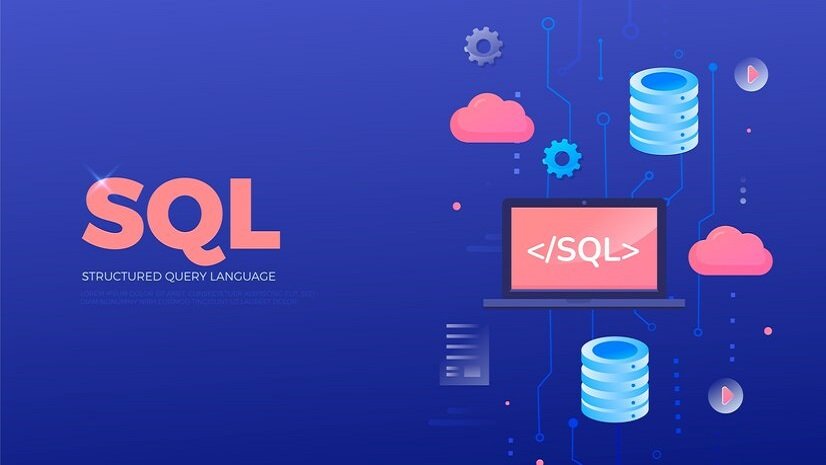
Advanced SQL Questions for Data Scientists with Solutions
1. What is Normalization?
Normalization is a database organizing technique that reduces redundancy in a set of relations. It is the process of applying normal forms to a relation to structure data efficiently and eliminate data anomalies.
- 1NF: A relation is in 1NF if it has atomic values, meaning each column contains indivisible values.
- 2NF: A relation must be in 1NF, and all non-key attributes must be fully functionally dependent on the primary key to be in 2NF, eliminating partial dependencies.
- 3NF: A relation must be in 2NF and must not have transitive dependency to be in 3NF, ensuring that non-key attributes depend only on the primary key.
- BCNF: A stricter version of 3NF, also known as Boyce-Codd Normal Form, which ensures that every determinant is a candidate key, removing remaining redundancy.
2. What is the Distinction Between DDL and DML?
- DDL (Data Definition Language): Used to define and modify database schemas (e.g., CREATE, ALTER, DROP, RENAME, TRUNCATE).
- DML (Data Manipulation Language): Used to manage and manipulate data within the schema (e.g., INSERT, UPDATE, DELETE, MERGE, SELECT).
- Key Difference: DDL modifies the structure, while DML modifies the data within the existing structure.
- Where Clause: Used in DML to filter records but not applicable in DDL commands.
3. What Are SQL’s ACID Properties?
ACID properties ensure reliable transactions in SQL, maintaining database integrity:
- Atomicity: Transactions are all-or-nothing, meaning either all operations succeed or none are applied.
- Consistency: Ensures data integrity before and after a transaction, enforcing constraints.
- Isolation: Prevents conflicts in concurrent transactions, ensuring transaction independence.
- Durability: Ensures completed transactions are permanently saved, even in the case of system failure or crash.
4. How Can I Identify Duplicates in a Table?
To find duplicate records and avoid data inconsistency:
- Use GROUP BY to group identical values.
- Use HAVING COUNT(*) > 1 to filter duplicates.
SELECT column_name, COUNT(*)
FROM table_name
GROUP BY column_name
HAVING COUNT(*) > 1;
Additionally, you can use ROW_NUMBER() to identify and remove duplicates efficiently.
5. How Does a Clustered Index Differ from a Non-Clustered Index?
- Clustered Index: Defines the physical storage order of rows (like a dictionary), meaning data is stored in order of the index.
- Non-Clustered Index: Stores pointers to the actual data, keeping index data separate from physical storage order.
- Performance: Clustered indexes are faster for read-heavy operations, while non-clustered indexes are more flexible for multi-condition queries.
- Memory Usage: Clustered indexes consume less memory since they store data directly, whereas non-clustered indexes need additional storage.
6. What is Denormalization?
Denormalization is a database optimization technique where redundant data is added to improve query performance, reducing the need for expensive joins. It is commonly used in data warehouses to enhance read efficiency at the cost of storage space.
7. What is Collation in SQL?
Collation determines character set rules for sorting and comparison. It affects case sensitivity, accent handling, and sorting order in string-based operations.
- Case Sensitivity: (_CS) defines if uppercase and lowercase letters are treated differently.
- Accent Sensitivity: (_AS) differentiates characters with accents from those without.
- Kana Sensitivity: (_KS) distinguishes between Hiragana and Katakana in Japanese.
- Width Sensitivity: (_WS) differentiates between full-width and half-width characters.
- Binary Sorting: (_BIN, _BIN2) sorts data based on binary code values.
8. How Do Inner, Outer, and Full Outer Joins Differ?
- Inner Join: Returns rows with matching values in both tables, excluding unmatched records.
- Left Outer Join: Returns all rows from the left table and matched rows from the right, filling unmatched results with NULL.
- Right Outer Join: Returns all rows from the right table and matched rows from the left, filling unmatched results with NULL.
- Full Outer Join: Returns all rows from both tables, including unmatched records with NULL values.
9. What is the Difference Between UNION and JOIN?
- JOIN: Combines data from multiple tables based on a related column, merging data horizontally.
- UNION: Combines results from two queries and removes duplicates, merging data vertically.
- UNION ALL: Keeps duplicate values, making it faster than UNION.
10. Query to Find the Highest Salary in a Table
SELECT * FROM EMP
WHERE salary = (SELECT MAX(salary) FROM EMP);
Alternatively, use ORDER BY and LIMIT:
SELECT * FROM EMP ORDER BY salary DESC LIMIT 1;
11. What is the Difference Between Inclusive and Shared Locks?
- Shared Lock: Allows multiple users to read but prevents modification, ensuring data consistency.
- Exclusive Lock: Prevents both reading and writing by others, ensuring isolated transactions.
12. What is the SQL Transpose Mechanism?
- Converts rows to columns (Pivot) or columns to rows (Unpivot), restructuring data for reporting and analysis.
13. How Does the B-Tree Index Work?
- A self-balancing search tree where all leaf nodes are at the same level.
- Reduces search time by allowing efficient traversal and insertion.
- Stores keys and pointers to actual data records, optimizing search queries.
14. What is the Difference Between DELETE and TRUNCATE?
- DELETE: Removes specific rows, logs transactions, and can be rolled back.
- TRUNCATE: Removes all rows, operates faster, and cannot be rolled back.
- Performance: TRUNCATE is faster and resets identity values.
15. What Are the Costs of Having a Database Index?
- Consumes storage space.
- Slows down INSERT, UPDATE, and DELETE operations due to index maintenance.
- Requires periodic optimization for performance tuning.
Final Thoughts
Mastering these advanced SQL interview questions will help data scientists excel in SQL-based technical interviews. A deep understanding of indexing, normalization, transactions, and query optimization is crucial for real-world database management. By learning these concepts, one can effectively work with large-scale data and ensure efficient querying in high-performance applications.
Read Our More Blogs: Interactive Websites: Why Engaging Design Boosts Customer Retention


